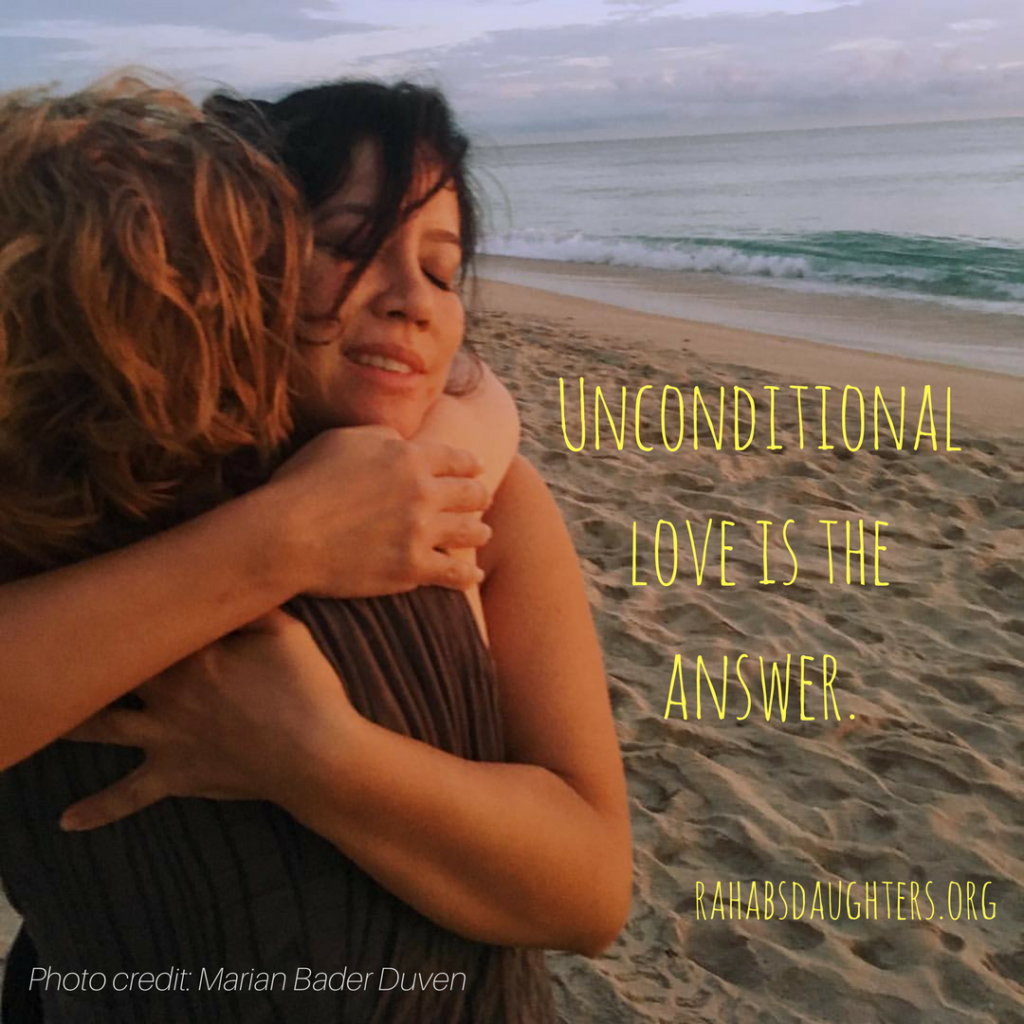Rescue is just the first step: It takes a village (Lisa’s story, part 2)

After our primary role of preventing trafficking, through education and advocacy, Rahab’s Daughters rescues, rehabilitates and reintegrates trafficking victims.
As labor- and planning-intensive—and often dangerous—as the initial rescue may be, it is just the first step in a long process, from meeting basic human needs through giving the rescues the emotional tools, education and vocational skills to thrive.
We can’t—and don’t—do it alone.
When a person has been enslaved, they are stripped of everything: identity, property, choices… Every aspect of their lives is under strict, enforced control. This means that there are very real practical and emotional obstacles between the victim and freedom. Lisa’s
story demonstrates the all-too-common hurdles that must be overcome, and how Rahab’s Daughters partners with other organizations to get these girls to safety. (Read the first part of her story, here.)
Lisa came to us by way of a national law enforcement agency. (Non-disclosure agreements protecting the victims and investigation confidentiality prevent us from specifying which).
Powerful allies in the fight against human trafficking, law enforcement agencies refer survivors to us. While investigating an Illinois murder, law enforcement identified Lisa as someone who knew the victim. It was only after she was tracked down to Pennsylvania did investigators realize that Lisa, like the victim, had been sold – several times over, and across state lines.
Lisa was first trafficked at age 13. She was 17 when authorities found her.
To traffickers, the girls (and boys) are just pieces of property. “They want to send the girls in different directions because they don’t want to get caught—because if you have an underage child in a single area for too long, you’re going to be found and reported,” Sam Wijeyakumar, Rahab’s Daughters’ founder, explains.
Law enforcement finding Lisa, however, is just step one. And although they need her for a case in Illinois, the harsh reality is that they don’t have budget allocated to help victims like Lisa. “Not even to buy her a bus ticket or some McDonald’s… People think that these government organizations have money but they don’t. Law enforcement can’t do anything for them,” Sam reveals. “They need organizations like Rahab’s Daughters to take care of all that.”
Rahab’s Daughters also partners with the National Runaway Hotline, who will help cover the cost of bus tickets, if the trafficked victim is old enough to travel by herself. Otherwise, we must find other means.
Plane is best and easiest because it’s point-to-point and we can pick the victims up before they get scared. Train is the next best alternative. Both options require identification. The problem is, many victims have no identification; they come to us with little more than the clothing on their backs.
You can get on a bus across the country on a bus without ID; you can’t get on a train or a plane without ID. “Bus is terrible because it’s a long ride, people are preying on them the whole time, and they are scared out of their minds. So, we hate it, but sometimes it’s our only option because buses will take you without identification,” says Sam.
We get Lisa into our program, and—although our safe houses accept children with parental approval, and in fact are some of the few places that accept trafficking survivors and their children—time is of the essence and we don’t have Lisa’s mom’s signature. So, to get Lisa shelter in the meantime, we partner with an area safehouse for kids 8 – 18 who have been trafficked, run by a major international charitable organization. (We can’t specify details on the safehouse without endangering the children sheltered there).
Once Lisa is securely ensconced at the safe house, we take the painstaking next steps—still, only just meeting Lisa’s basic needs: obtaining identification, medical and trauma-informed services, and clothing.
Working with ally health care organizations, we get Lisa the first medical care she’s received in 4 years. Traffickers don’t often permit the girls to see a doctor beyond cursory emergency room visits, where girls and medical staff remain closely monitored by the pimps’ watchful and controlling eye. (Hence, the importance of educating medical staff on how to identify when a patient may be a trafficking victim).
It’s revealed that parts of her skull had been broken at various times over the course of those years, and never treated. She also has HPV, a common sexually transmitted disease. Additionally, she is diagnosed with bipolar disorder and requires medication. Until Lisa’s ID is in place so she can qualify for Medicaid, all medical treatment and prescriptions are donated by partner organizations or paid out-of-pocket by Rahab’s Daughters.
As Lisa’s story illustrates, it takes a not-so-small village to get trafficking survivors to safety, let alone to become fully-functioning, thriving members of society. It took 4 collaborations alone to get her from Pennsylvania to housed and medically treated in Illinois. Fortunately, Rahab’s Daughters has a lot of help along the way.
You can help, too. Lisa’s story is just a narrow window into the sorts of expenses Rahab’s Daughters incurs over the course of a single case: transportation, medical care (including psychological), and basic needs are just the tip of the iceberg. It is a time-intensive labor of love that requires everyone’s support.
You can help trafficking survivors like Lisa get their freedom, and their lives back. There are multiple ways to contribute. Two of the simplest are to donate, here; or register for an upcoming event, here.
Read Part 1 and Part 3 of Lisa’s story.
Please note: As is the case with many rescued children, Lisa’s life and freedom remain in danger, so to protect her safety, names and identifying details have been changed.
